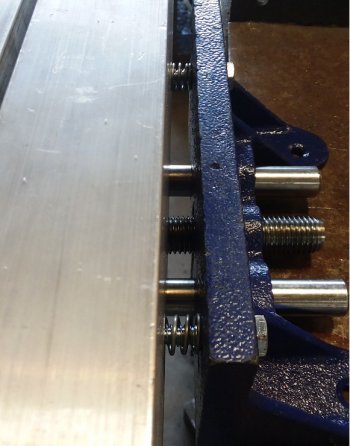mpcoppin
Member
Background before the question:
I have been making kitchen knives lately. Mostly out of 80CrV2. I usually have a spine thickness around 0.10” and I grind the edge down to about the thickness of a dime (0.05”) pre-HT. I’ve been quenching in warm canola oil with pretty good results but I get the occasional warp.
I’ve heard the smart people taking about plate quenching and am wondering if it is something I want to try. Here are my questions.
1- Sometimes I will pull my blade out of the oil and stick it in the vise between a couple of lengths of angle iron “just in case” there are any warps. Is this actually doing any good? Is the steel still in a state where it can be straightened after it comes out of the oil (it is usually black and smoking)?
2- If I were to buy some aluminum plates and skip the oil… Are there issues with plate quenching when you have pre-ground bevels? Am I going to get a 0.05” air gap between the hot steel and the plate? Will it make a difference?
So far I’ve never had a warp that was so bad I couldn’t fix it on the grinder. But, it would be nice to not have to fix them at all.
I have been making kitchen knives lately. Mostly out of 80CrV2. I usually have a spine thickness around 0.10” and I grind the edge down to about the thickness of a dime (0.05”) pre-HT. I’ve been quenching in warm canola oil with pretty good results but I get the occasional warp.
I’ve heard the smart people taking about plate quenching and am wondering if it is something I want to try. Here are my questions.
1- Sometimes I will pull my blade out of the oil and stick it in the vise between a couple of lengths of angle iron “just in case” there are any warps. Is this actually doing any good? Is the steel still in a state where it can be straightened after it comes out of the oil (it is usually black and smoking)?
2- If I were to buy some aluminum plates and skip the oil… Are there issues with plate quenching when you have pre-ground bevels? Am I going to get a 0.05” air gap between the hot steel and the plate? Will it make a difference?
So far I’ve never had a warp that was so bad I couldn’t fix it on the grinder. But, it would be nice to not have to fix them at all.

